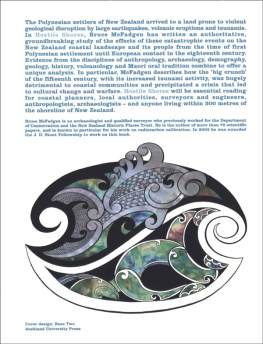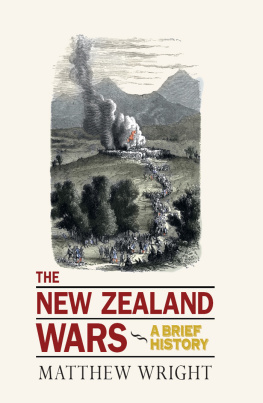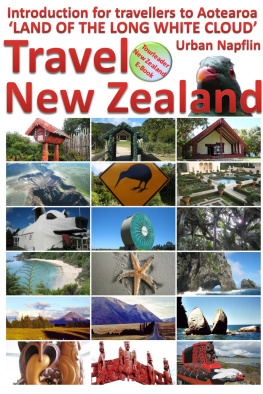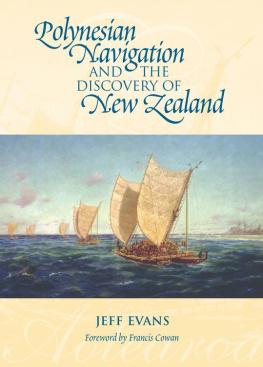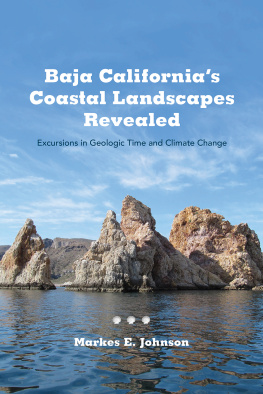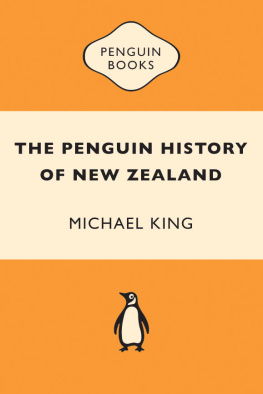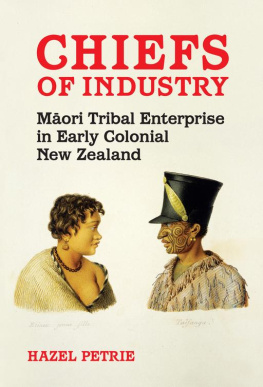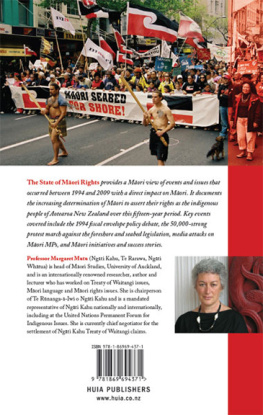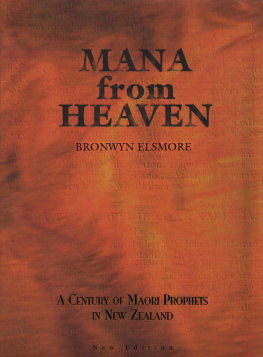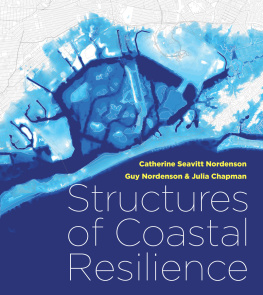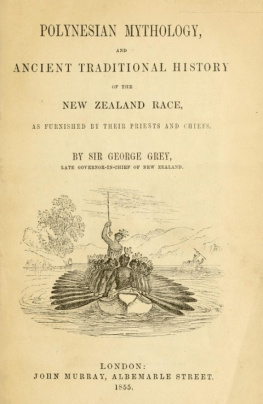Hostile Shores
Hostile Shores
Catastrophic Events in Prehistoric New Zealand and their Impact on Maori Coastal Communities
Bruce McFadgen
First published 2007
This ebook edition 2013
Auckland University Press
University of Auckland
Private Bag 92019
Auckland 1142
New Zealand
www.press.auckland.ac.nz
Bruce McFadgen, 2007
eISBN 978 1 86940 673 8
Publication is kindly assisted by
National Library of New Zealand Cataloguing-in-Publication Data
McFadgen, B. G.
Hostile shores : catastrophic events in prehistoric New Zealand and their impact on Mori coastal communities / Bruce McFadgen.
Includes bibliographical references and index.
ISBN 978-1-86940-390-4
1. Natural disastersNew ZealandHistory. 2. Maori (New Zealand people)History. 3. New ZealandHistory. I. Title.
993dc 22
This book is copyright. Apart from fair dealing for the purpose of private study, research, criticism or review, as permitted under the Copyright Act, no part may be reproduced by any process without prior permission of the publisher.
Cover image: Brian Flintoff, Destruction of Moawhitu by
the tidal wave Tapu-arero-utuutu (see page 11).
Cover design: Spencer Levine, Base Two
this far-pitched, perilous hostile place
this solitary hard-assaulted spot
fixed at the friendless outer edge of space.
from Sonnet of Brotherhood (1923),
R. A. K. Mason
Contents
Acknowledgements
This book had its genesis in the sand dunes of the Manawatu in the early 1960s, when Dr Terry Barrow of the Dominion Museum (now the Museum of New Zealand Te Papa Tongarewa) invited me to lead the excavation of a moa-hunting site in the dune lands near Foxton. I had no idea then where the journey I was beginning would take me. Soon afterwards, Professor Charles Higham of Otago University stimulated my interest in radiocarbon dating and environmental archaeology, and in so doing pointed the direction the journey was to head. At Victoria University, Professor Harold Wellman and his colleague Colin Vucetich extended these interests during my PhD research, and introduced me to the study of earthquakes and soils that were to provide the major signposts for the route that my research, and ultimately this book, finally took. It is therefore to the memory of Harold Wellman the founder of neotectonics in New Zealand (Nathan 2005) and to Colin Vucetich that this book is dedicated.
It has taken a little over four years to write Hostile Shores, and many people have helped in various ways during that time. I am indebted to the Stout Research Centre for New Zealand Studies at Victoria University of Wellington (VUW) for awarding me the 2003 J. D. Stout Fellowship, funded by the Stout Trust, which enabled the book to be started. After 37 years as a public servant, it was a welcome change to enter the university environment and be part of the research centre, very ably overseen by the Director, Dr Lydia Wevers. She, her staff, and the resident scholars made my stay very rewarding and I am extremely grateful to them.
The manuscript has benefited enormously from the input and comments of colleagues. I would particularly like to thank Tony Walton (Research, Development, and Improvement Unit, Department of Conservation (DOC)), Dr Rodger Sparks (formerly head of the Rafter Radiocarbon Laboratory), Dr Geoff Chambers and Dr Jonathan Gardner (School of Biological Sciences, VUW), Dr Louise Furey (Auckland), Dr Danny Keenan (Department of Maori Studies, VUW), Dr Ian Barber and Dr Ian Smith (Department of Anthropology, University of Otago (OU)), and an unknown referee whose comments were gratefully received. I am particularly indebted to Professor Euan Smith (School of Geography, Environment and Earth Sciences, VUW) for taking on the task of reading the entire manuscript, and providing me with helpful and detailed comments and advice on all manner of matters to do with tectonics. Any remaining errors are, of course, entirely my responsibility, as are the conclusions reached.
Staff of the Institute of Geological and Nuclear Sciences (GNS Science), VUW (School of Geography, Environment and Earth Sciences, School of Biological Sciences, and Department of Maori Studies), DOC, NIWA, Landcare, Waikato University Radiocarbon Laboratory, and New Zealand Historic Places Trust have been very helpful with discussion and advice, and with providing me with access to data, reports, and publications. I would particularly like to thank Gaye Downes (GNS Science) for her assistance, and especially Dawn Chambers (Rafter Radiocarbon Laboratory), who frequently and at short notice checked the details of many radiocarbon dates for me.
Information, advice, or permission to cite unpublished data were provided by Brian Allingham and Amanda Symon (Dunedin), Atholl Anderson (Australian National University, Canberra), Ian Barber (OU), Rob Brassey (Auckland), Emma Brooks (Wellington), Bill Bull (Kaikoura), Martin Cawthorn (Plimmerton), Kelvin Day (Taranaki Museum), Earthquake Commission (Wellington), Matt Felgate (Auckland), Jeremy Gibb (Tauranga), Te Ripowai Higgins (Te Herenga Waka Marae, VUW), Ian Hutchinson (Simon Fraser University, Vancouver), Kaikoura Museum, Matt McGlone (Landcare), Dave Nevin (Whangarei), Reg Nichol (Picton), Scott Nichol (University of Auckland (AU)), Dan Riddiford (Te Awaiti), Brenda Sewell (Auckland), Adrian Taylor (OU).
The text of this book has benefited greatly by the many maps and diagrams and the very professional skill with which they have been prepared. For producing the figures, I would like to thank Igor Drecki, Tim Nolan, and Louise Cotterall, of the School of Geography, Geology and Environmental Science, AU, for their excellent work. Brian Flintoff (Nelson) generously provided the image on the books front and back covers, which I originally saw in John and Hilary Mitchells very illuminating publication Te Tau Ihu O Te Waka: a history of Maori of Nelson and Marlborough. I am very grateful also for photographs and images provided by Scott Nichol (AU) () published by Elsevier.
For providing office space at various times I would like to thank Warwick Greenwood, Mike and Karen Shaffrey, Paul Froggatt, and Jonathan Gardner.
I would also like to thank Ngapari Nui, Chairman of the Wai O Turi Potakataka Trust Board, and Mr Jim Baker, for the opportunity to visit Waitori.
Publication of this book was made possible by grants from the Earthquake Commission and the Department of Conservation, and assistance from Arch. Research, Wellington. Their contributions are gratefully acknowledged.
The quality of successive drafts of the text was greatly improved by Anne French. Mike Wagg edited the final version. My thanks to Elizabeth Caffin and the staff of Auckland University Press including Katrina Duncan and Anna Hodge for their efforts in guiding this book through to publication.
Last, and most importantly, three people who played a major part in this book finally reaching fruition are Dr James Goff, Anne French, and my wife Betty McFadgen Richardson. James Goff first introduced me to the intriguing possibilities of tsunami research and how these events might have affected prehistoric Maori. He has been an endless source of inspiration and ideas, and we have spent many stimulating days together in the field researching and debating them. His ability to see connections between apparently disparate observations is unsurpassed. Anne, an experienced academic publisher in an earlier life, ably steered me through the intricacies of preparing a manuscript and submitting it to a publisher, happily discussed ideas with me, made sure that the text in my early drafts made sense, and with Betty pushed me through the writing at a somewhat faster pace than might otherwise have been the case the finished product is greatly improved for their efforts. Finally, very special thanks to my wife, Betty for her encouragement to apply for the Stout Research Fellowship, for her assistance with researching some of the topics discussed, and for making sure that despite the inroads on family activities, I had undistracted time to finish the work this book would not have been possible without her support.
Next page
